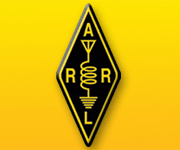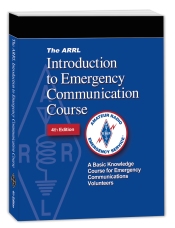I wanted to share this story of interest to others who volunteer and support their communities in times of need. After recent major forest fires in the mountains above Colorado Springs with the loss of several lives and 350 homes lost, and a resulting 32,000 evacuees, flash flooding became our next urgent concern. Our local RACES team was activated by the Sheriff's Office to act as spotters for rising streams and possible flash flooding.
On a recent night as I stood in rain on the center span of the steel pedestrian bridge about 20' above a dark raging torrent of Monument Creek's muddy water, a passerby stopped to observe with me and comment about how amazingly fast the water had come up. I quickly agreed and said "Yeah, my buddy and I have been here awhile watching it and you should have seen it -- it went from just ankle deep to chest high in a matter of seconds!" Seeing my yellow safety vest he asked if I was with the city works or other agency. I said, "No, we're just a bunch of ham radio operators who volunteer our time to the county; we're actually with the El Paso County Sheriff Office." I then went on to explain there was similar flash flood spotter teams strategically placed throughout the county watching streams rise and then using our radios to report observations back to the EOC. He said, "It's great to know someone's out here watching our backs!" He then turned and extended his hand to shake mine and said "Nice to meet someone on the front lines." He thanked me for being there and then went on his way.
I must say I wore a proud smile as I walked back across the bridge in the drizzle realizing that yep, that's what we do alright; we're out here watching our community's back while they sleep, watch TV, and live their lives. It sure felt great and meant a lot to be paid a huge unsolicited thanks, especially from someone who probably is sleeping a little better tonight knowing that someone has his back! -- Steve Galchutt, WG0AT, Monument, Colorado
Article posted from 'The ARES E-Letter for July 11, 2012'
To receive all articles, sign up at www.ARRL.org.

